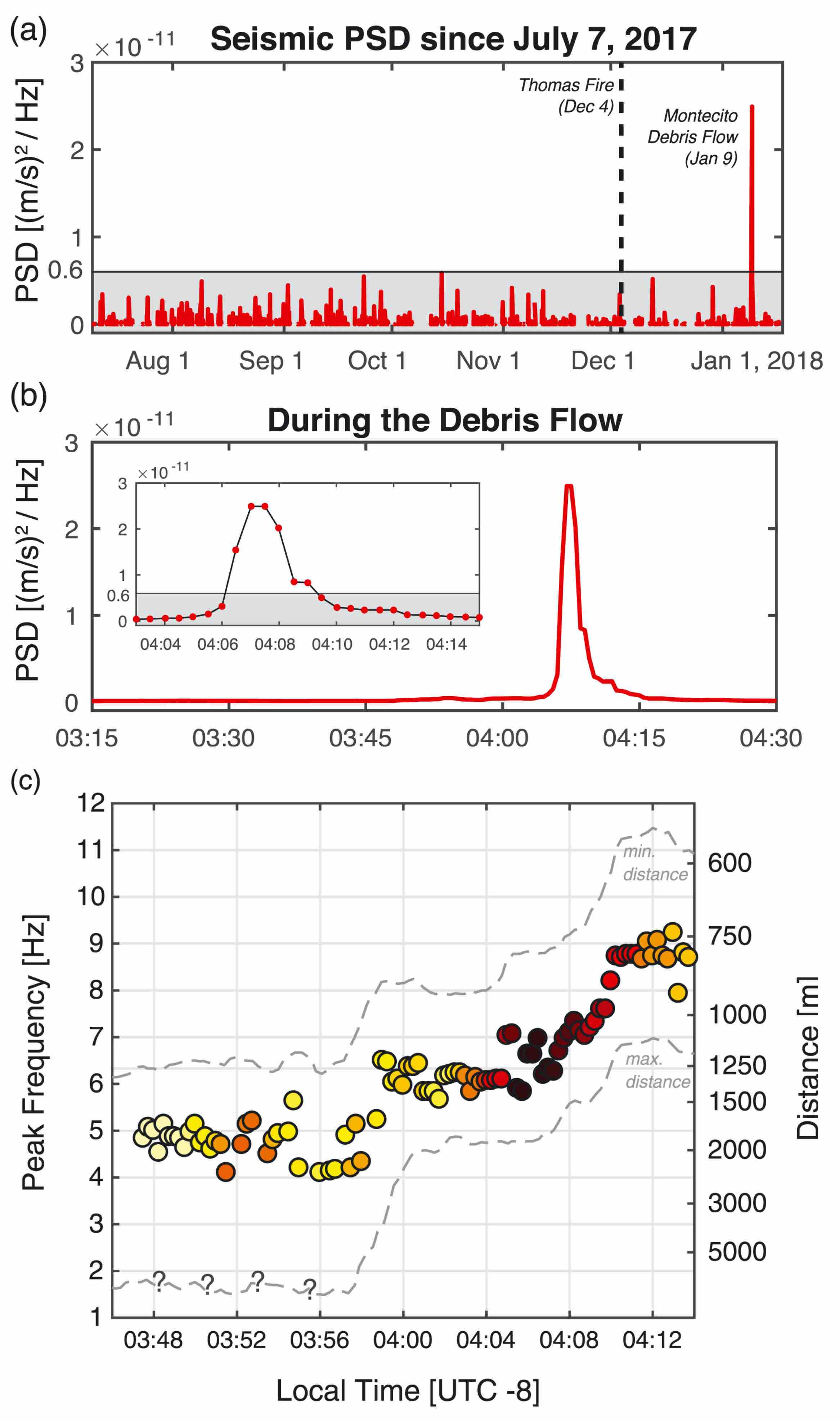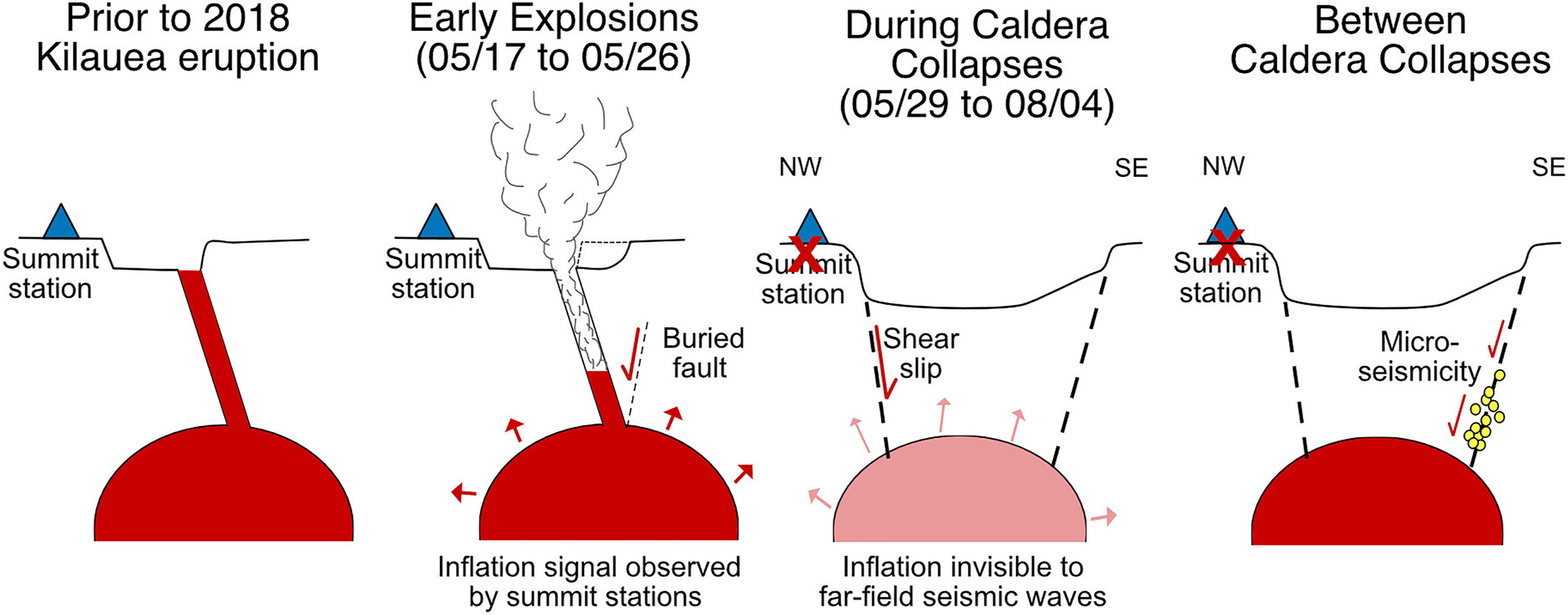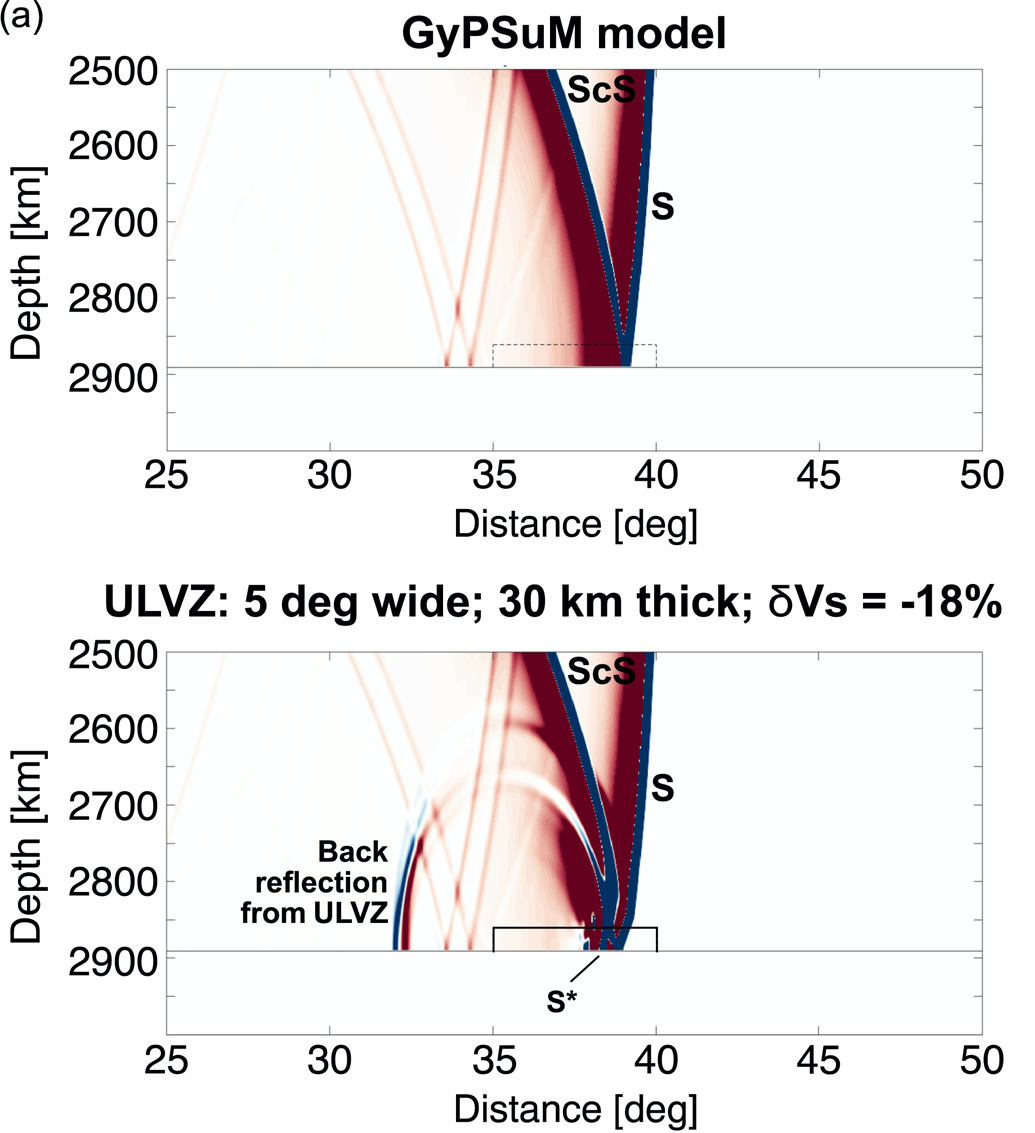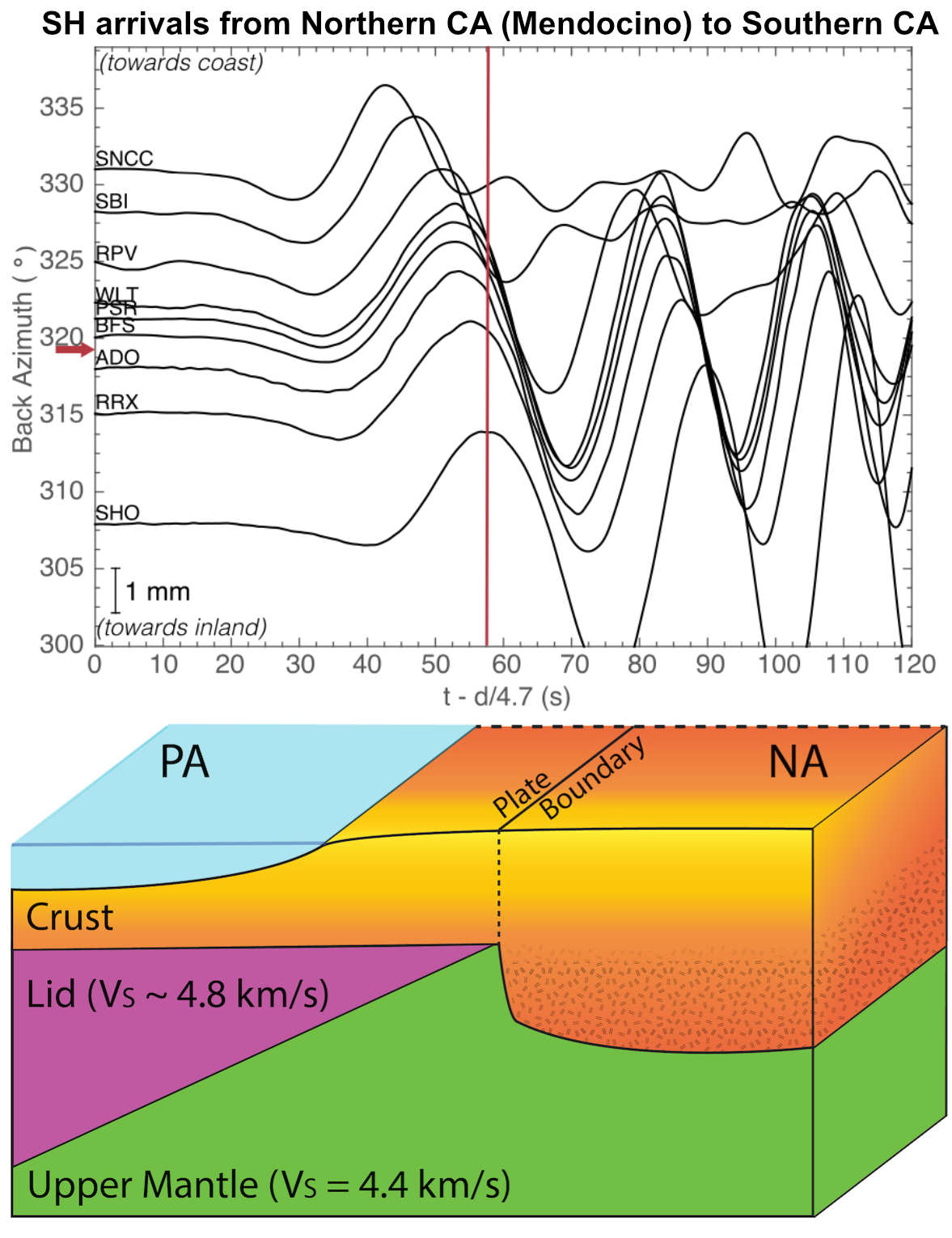Research
I apply these techniques to a wide range of contexts, from volcanic eruption to debris flow, from sedimentary basins to lowermost mantle, and from Earth to Venus.
Research Highlights
Natural hazards
I am interested in understanding the physical processes behind natural hazards through modeling the seismic sources, with the goal of building societal resilience.
 ▪ Debris flow studies for early-warning
▪ Debris flow studies for early-warning
An important gap in debris flow studies is closed by replacing an empirical approach
to describe debris flow with a physics-based model that accounts for the propagation of seismic waves from the debris flow to the seismic sensor.
During the 2018 Montecito debris flows, key parameters of the debris flows such as distance, boulder size, and flow rate can be determined using just a single seismic station and are corroborated by field observations.
Similar to earthquake early warning which predicts the arrival times of damaging surface waves, a physics-based debris flow model will allow a robust early warning system for the most devastating debris flows.
Collaborators: Victor Tsai, Mike Lamb, Tom Ulizio, Alex Beer
▪ Volcanic eruption
Volcanic eruptions are remarkable in many ways, particularly exemplified by the 2018 Kilauea eruption, spanning from explosive eruptions to massive caldera collapses. Moment tensor inversions are useful to determine the source mechanism. However, unlike typical earthquakes, there are several challenges in determining the source solutions such as inherent tradeoff between source parameters for shallow volcanic events. Adding infrasound measurement can provide crucial constraint to the moment tensor solutions when inversion from seismic data alone cannot distinguish the solutions. Using all types of available data (seismic, infrasound, geodetic), we are able to characterize the large seismic events and understand the evolution of the 2018 Kilauea eruption.
Collaborators: Zhongwen Zhan, Quentin Brissaud, Osamu Sandanbata

Waveform modelling
Careful identification of the seismic phases has revealed many major discontinuities and structural and compositional boundaries within the Earth’s interior. While seismic tomography has been extremely powerful in revealing 3-D heterogeneities within the earth, the smoothing process during the inversion inherently smears the sharp boundaries and obscures fine-scale structures. Using a diverse selection of seismic phases (e.g. uncommon earthquake-station paths, new body wave travel time measurements, dense array), combined with numerical simulations at large spatial distances and high frequencies, help improve velocity models and understand how wave propagates in heterogenous environments, including lowermost mantle and sedimentary basin.
▪ Basin and ground motion hazards
Understand the direct effect of sedimentary basins on ground motion is important particularly for the Los Angeles area where shallow rupture of large earthquakes is expected.
Many previous modeling studies have focused on large regional earthquakes which
can mask the direct basin response. Therefore, we isolate the basin effect by only
analyzing small earthquakes which occurred close to the basin but at different depths.
Seismic waveform analyses, numerical simulations, and dense array techniques
show that shaking duration is highly dependant by source depth and better models of attenuation and shallow basin structures are crucial in accurately predicting these ground motions.
Collaborators: Don Helmberger, Rob Graves, Chunquan Yu

 ▪ Fine-scale structures at lowermost mantle
▪ Fine-scale structures at lowermost mantle
Ability to perform simulation at high frequency (up to 1 Hz) for global distances (> 110 degree) allow us to model waveform complexities observed in core and diffracted phases due to small-scale structures at the lowermost mantle. At the northeastern edge of the Pacific LLSVP, we modeled seismic features that can be inferred as a ULVZ driven toward the edge while potentially pushed by a subducted slab. This configuration may trigger plume generation due to strong thermal instabilities. Combining with mineralogical-modeling, we can provide constrain on the inherent thickness-velocity tradeoff in modeling ULVZ and a solid iron-rich magnesiowüstite-bearing assemblage with compatible morphology predicted from geodynamical simulations..
Collaborators: Don Helmberger, Jennifer Jackson, Vasilije Dobrosavljevic
 ▪ Plate boundary and long-term plate deformation
▪ Plate boundary and long-term plate deformation
It is challenging to resolve any rapid variation in the lower crust – upper mantle velocity structure across plate boundaries as the teleseismic phases which are normally used in structure-imaging, have nearly vertical ray paths and hence, are insensitive to this type of velocity change. Unique regional data sets which sample the Pacific plate and North American plate boundary shows strong travel time variations across this boundary. From numerical simulations, these travel times are best fit by a model consisting of a fast lid abutting a thick slow crust, suggesting contrasting lithospheric strength that may explain the observed asymmetric strain rate across the boundary.
Collaborators: Don Helmberger, Rob Graves
▪ Earth-atmosphere coupling
Seismic energy from earthquakes or subsurface volcanic processes can couple with the free surface and propagates in the air as pressure waves at acoustic sound velocities, and be detected by infrasound sensors at large distances. This phenomenon motivates research projects using balloon-based sensors to detect earthquake signals at other planetary surfaces like Venus where high temperature and pressure drastically shorten the lifespan of ground sensors. Results so far have shown successful detections of active source signal (from hammer) and aftershocks (Brissaud et al., not involved). In volcanic source studies, infrasound signals have also shown to be sensitive to upward radiating energy and provide additional constraint particularly on the source depth.
Collaborators: Infrasound research groups at JPL-Caltech and ISAE-SUPAERO, France
